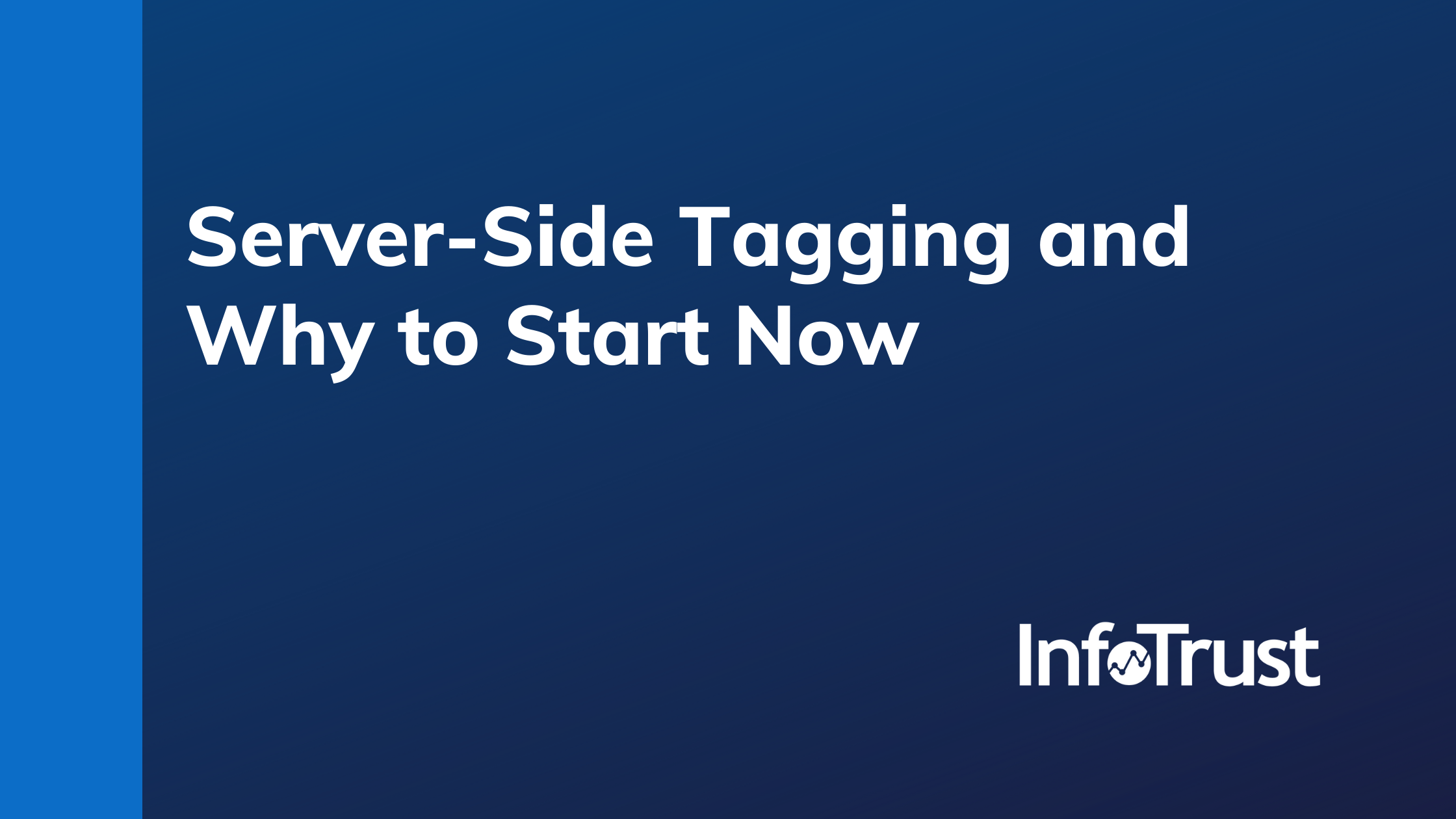Wondering why you should consider server-side tagging? Today we’re sharing a list of benefits. While we’re focusing on Google’s new server-side tag manager (sGTM), most of what is discussed can be applied to any server-side tagging platform.
Intro
Traditional web tag management is what we’re most familiar with, right? We’re downloading SDKs from a variety of different sources and they’re running on the browser, usually through a tag management system, collecting any data that they want and sending it off to the different endpoints where it will be put to good use—such as Google Analytics, Facebook, or any other first- or third-party inputs. With the sGTM approach, things are very similar, but slightly different.
In sGTM, you’re still preparing the data in the tag management system but instead of loading different SDKs from different places, you’re sending that data to a sub-site pointing to a single endpoint where that data is then processed, prepared, and sent off from the server to the different endpoints. Instead of being managed directly or running directly in the browser, the data is carted off to a backend service, which is then responsible for moving that data somewhere else.
In the case of sGTM, the internals to the service are handled by clients, which are essentially the component that’s responsible for receiving a data request, and deciding whether it’s going to accept it or not. And, especially its responsibilities to claim that request that it can treat the data and make it available to the tags. There will be a very strong focus on the data model, obviously, because the data needs to be packaged in a way that’s going to be understood, first by the client, and then by the different tags—so it’s very important to have a comprehensive data model.
Benefits of sGTM
While sGTM is still relatively new, there are some excellent features already:
- Thanks to the pre-package element, it’s simple to do a default integration by enabling the tag. The data will flow naturally with very little adjustment needed.
- There’s support for Google Analytics, Google Ads, Floodlights, and the Facebook conversions API tab.
- And in the community, there are more and more functionalities and tags that are slowly being added, or are being made available so that you can integrate them into your container.
- You can create custom tags as well.
What sGTM Can Do for Your Business
- The first item sGTM can do for you is the ability to start enhancing or increasing durability of data collection. Ad blocking technology and the changes in how third-party cookies are managed (or lack thereof) have had a significant impact on how we consume data. From a durability perspective, one of the things that sGTM can gain you is being able to run your data under a first-party domain.
- The second part is the ability to set server-side cookies with sGTM. When you’re making network calls to it, there is a client response back and with that, you have the ability to set server-side cookies. Historically, most marketing and analytics platforms are deployed with tags and pixels on the client-side, and they’re setting the cookies client side using JavaScript. This is an area where when you start hearing things like Safari ITP and some of the changes, restrictions, and controls on setting cookies—this is where that policy is getting applied to restrict the ability to set, or the duration of, the ability of cookies that are set client-side. Today, nothing of what Safari ITP does looks at cookies that are being set server-side. For platforms that are able to do so—Google Analytics being one of them—you have the ability to set the client ID for Google Analytics as a server-set cookie rather than a client-set cookie. And that makes it more durable and less likely that things like ITP are going to alter or change the existence of those cookies, and more importantly, the expiration date of those cookies.
- Another aspect that server-side tagging provides you is the increased ability for data governance. With this, tags can only use the data that you’ve exposed within your client so it’s a little bit easier to receive and filter out sensitive information such as personally identifiable information (PII). In addition, there are some things that historically on the client-side you can’t control sending the platform such as the client IP address, or browser user agent; those are inherently in all network calls that come from the browser. But with these calls being sent from the server, you can control whether those platforms receive that type of information.
- Additionally, sGTM is able to build out custom data sets and ensure that each platform is receiving only the data that you want to receive and it needs to receive based on your relationship with that vendor.
- And then lastly, there’s data enrichment. This is the ability to add data stored server-side to the data you are receiving from the client, thus creating more meaningful data while still keeping your network requests light and fast.
Want to learn more? Check out our recorded webinar and reach out to us with any questions.



